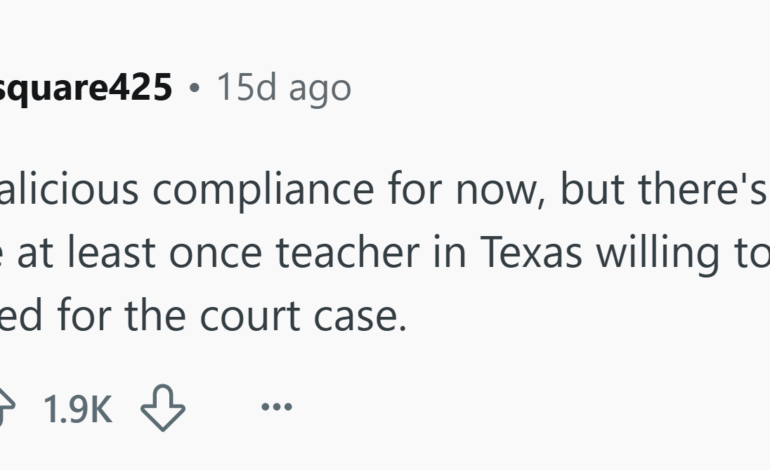Texas Teachers Challenge Ten Commandments Law Amid Controversy

In Texas, a recently enacted law mandating the display of the Ten Commandments in public school classrooms has sparked significant controversy and resistance among educators. Signed into law earlier in the summer of 2025, the legislation requires a framed copy of the biblical text, measuring 16 by 20 inches, to be prominently displayed in every classroom. As anticipated, the law has faced immediate legal challenges, prompting teachers to explore ways to respond to the mandate.
Legal action began shortly after the law’s passage, with families representing various religious backgrounds filing lawsuits. They argued that the requirement infringes upon their children’s constitutional rights. This challenge draws on the precedent established in the 1980 Supreme Court case, Stone v. Graham, which determined that a similar law in Kentucky violated the Establishment Clause by promoting religion within public schools. In their lawsuits, Texas families claimed their children would be “forcibly subjected to scriptural dictates, day in and day out.”
On August 20, 2025, U.S. District Judge Fred Biery issued a preliminary injunction in the case of Rabbi Nathan v. Alamo Heights Independent School District. The ruling temporarily blocks the law, which was set to take effect on September 1, suggesting that it likely violates both the Establishment and Free Exercise Clauses of the First Amendment. This injunction halts enforcement of the display requirement, although many educators had already begun to contemplate how they would address the mandate if it were enforced.
As the legal battles unfold, teachers have taken to social media to share their strategies for navigating the controversial law. Some have chosen direct defiance, while others have employed creative methods of compliance. One educator expressed their intent to post the First Amendment alongside a summary of the Stone v. Graham case, emphasizing the importance of constitutional rights. Others have utilized satire, with one individual sharing the Ten Commandments in the illegible Wingdings font as a humorous protest.
In more elaborate responses, teachers have suggested displaying the Ten Commandments alongside teachings from various global traditions. One Reddit user proposed including the Buddhist Five Precepts, the Islamic Pillars of Faith, the Hindu Yamas and Niyamas, and the Native American Seven Grandfather Teachings. This approach aims to promote equal representation of multiple faith traditions within public classrooms.
The teachers’ responses reveal a significant pattern: many feel that the rigidity of the law forces them into either open resistance or satirical compliance. Even those working in predominantly Christian and conservative areas have expressed discomfort with enforcing a single religious tradition in public schools.
Beyond the immediate concern regarding the Ten Commandments, some educators voiced broader frustrations about systemic issues within Texas’s education system. In comments to the Daily Dot, one teacher criticized lawmakers for prioritizing religious displays over pressing issues such as low funding, teacher shortages, and declining student outcomes. Another educator noted that hanging the Ten Commandments would not address the challenges of overcrowded classrooms, outdated materials, or stagnant wages.
As the situation continues to evolve, Texas educators remain engaged in discussions about their rights and responsibilities in the classroom. While the law’s future hangs in the balance, the collective response from teachers illustrates their commitment to advocating for their rights and the rights of their students in the face of legislative pressure.






